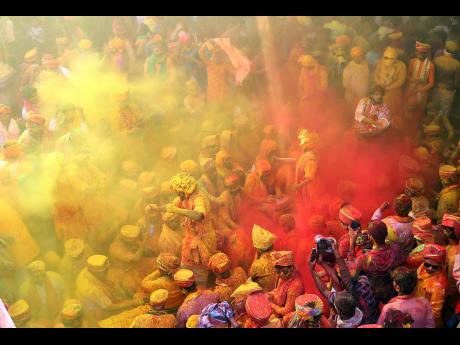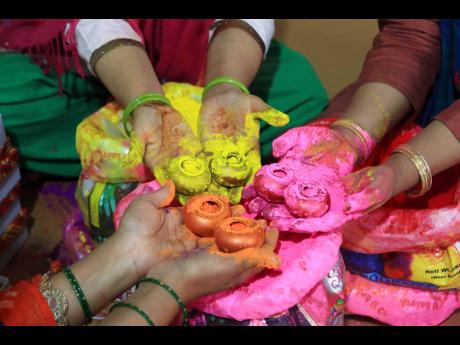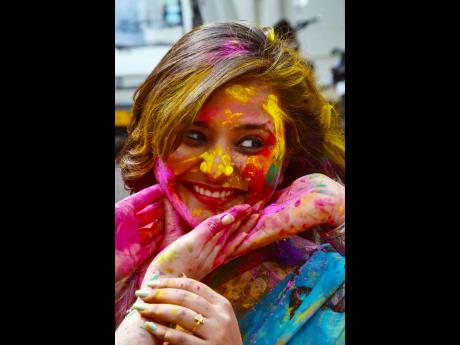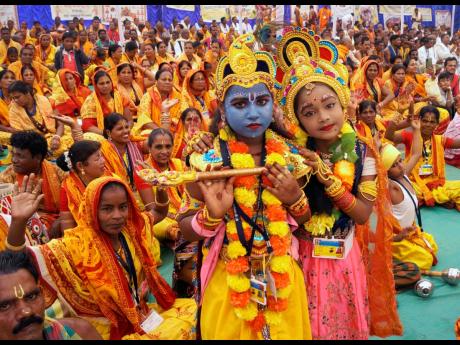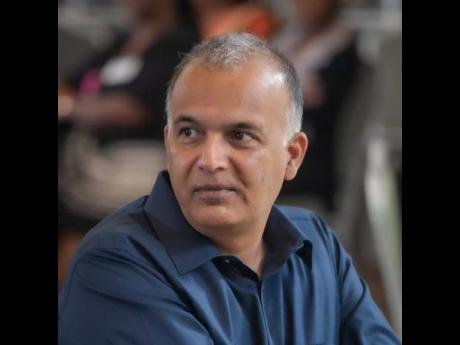Holi – ushering the warmth and colours of spring
Spring – it is the time of the year when Mother Nature unfolds all her beauty, flowers bloom, new leaves sprout on the trees, there is joy in the air. The season is ushered with Holi, or Phagwa as it is known in the Caribbean – the Hindu festival of colour, vibrancy – and according to its mythology symbolises triumph of good over evil, celebration of eternal and divine love. This day is also the beginning of the spring harvest season.
Celebrated on the full moon day, which usually falls in in the month of March – this year, Holi is going to be celebrated on March 8. The celebrations begin the night before by lighting a bonfire, which symbolises the destruction of evil. Next morning, the day is celebrated with people smearing and applying colours on each other – if you are in India, and decide to take a walk on the streets, you will come back looking like a colour palette. The primary, secondary, and every other hue is going to be you – no pne is spared, and importantly no one is a stranger. It is a celebration of bonding, camaraderie, and togetherness.
CELEBRATION OF LOVE
There are several Hindu mythological interpretations of why Holi is celebrated – we will focus on eternal love – in this world of wars, trauma, and distress as The Beatles said All You Need Is Love.
One of regions where on Holi the streets are turned into splashes of coloured powder is Braj (a region in the northern Indian state of Uttar Pradesh, south of the Indian capital New Delhi.
Hindu mythology has it that Lord Krishna (reincarnation or avatar of Hindu holy trinity of Vishnu, the preserver) and his consort Radha were born and grew up. Their love is said to be divine and unconditional.
Krishna, who is also known as Shyam (meaning dark), was a mischievous young boy. He once asked his mother Yashoda, if Radha, who was light-skinned, would not like him because he had dark skin. His mother, gave him a suggestion, for Krishna to go to Radha and ask her to colour his face in any colour she wanted. Radha did just that. Krishna was elated by this idea now that both of them could apply any colour on each other and look alike. A legend goes that this turned into a festivity and soon people started applying colour on each other. Thus, Holi also became the festival of colours celebrating love.
TRAVELLED TO THE CARIBBEAN
The stories of Radha and Krishna, and others in Hindu mythology, travelled with the indentured labourers to the colonies of British. These stories helped them and their future generations to learn about the significance, and symbolism of the festivals and their deeper meaning. Phagwa is a major festival in Trinidad and Tobago and Guyana. The festivities are accompanied by singing hymns, folksongs in the language of their ancestors, Bhojpuri (Chutney music is influenced by those beats), playing the drums. The songs are high pitched, fast paced and accompanied by traditional musical instruments, the manjira (consisting of a pair of small hand cymbals that make high pitch sound), and dhol (double-sided barrel drum) – the beats are rustic and on the crescendo.
Like all Indian festivals, beyond their religious symbolism, Holi is a time for people to come together, to forge new friendships, rekindle old ones, forgiveness for those who have wronged you and wishes for abundant blessings – of love and bountiful harvest. Let our lives be filled with colours of joy.
Send feedback to amitabh.sharma@gleanerjm.com or follow him on Twitter: @amitabhs

